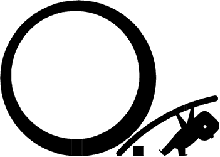 PICTURE THIS: you just secured an interview on the local news station. Or in your town’s daily paper. Or on CNN. Or in a trade publication. Or on the local morning radio show.
PICTURE THIS: you just secured an interview on the local news station. Or in your town’s daily paper. Or on CNN. Or in a trade publication. Or on the local morning radio show.
Congratulations!
Now all you have to do is remember ONE word.
L-E-V-E-R-A-G-E!!
Without leverage, your interview never really happened.
Without leverage, you may as well be winking in the dark.
Without leverage, you limit the potential audience of your appearance.
Because being That Guy is about repeated impressions.
It’s about credibility.
It’s about staying in front of people.
It’s about getting the maximum mileage out of your media appearances.
For example, let’s say you did a three-minute interview on your local radio station.
You’d want to ask yourself three questions:
1. How many people tuned it?
2. How many people missed it?
3. What can I do to keep that appearance alive?
And that’s the challenge: keeping it alive. Leveraging your interview in as many ways as possible.
Now, how do I know all of this?
Because I’ve done hundreds of them.
Big AND small.
CNN, 20/20, COSMO, WSJ, USA TODAY, The Today Show…
Local news, Internet radio stations, random TV shows watched by 13 viewers…
And if there’s one thing I’ve learned, it’s how to leverage a media appearance.
So, here’s a list of 35 ways to do so.
(NOTE: not all of these ideas are applicable to every type of appearance. Some are more conducive to TV, radio, print and the like. Pick the ones that work best for you!)
ALSO NOTE: always check to be sure you’re not infringing on any copyright violations before doing any of these.
BEFORE YOUR APPEARANCE
1. Ezine. At least a week in advance, tell everyone on your mailing list to tune in. To keep their eyes open. Remind them to set their Tivos, check the magazine racks and (not) to change that dial!
2. Text. Most cell phones have a feature that enables you to send a mass-text. This is a great way to save time AND contact a large group of people whose emails you might not have.
3. Call. When I was on 20/20, I physically called every single person in my cell phone. Probably about 150 numbers. (It took about two days. Mostly, I just left messages.) This technique is a great way to spread the word to your closest friends, who will gladly help build buzz around your appearance.
4. Email. Personally email clients, prospects, friends, family members and other people with big mouths. If you have a link ahead of time, send that for their reference. Make it SUPER easy for them to tune in so they don’t miss anything.
5. Blog. Make an official announcement on your blog. Think of it as a press release. Make your headline pithy, catchy and detailed enough so that 6 months from now, a total stranger could read your headline and know EXACTLY what to expect.
6. Teaser. At the end of every blog post up until the day your piece airs, include a teaser or a countdown as your signature line. For example, “Watch Sandy on Channel 9 News Next Week!” or “Only 17 more days until Mark’s Oprah Appearance!” Get people excited! REMEMBER: you’re kind of a big deal. (See the bottom of this blog post for a working example.)
7. Schedule. If you have a tour or appearance schedule on your website, include your media spot as one of the dates. For example, “January 13th, 2007: Hear Mark’s Spot on K-ROCK FM!”
DAY OF YOUR APPEARANCE
8. Blog. When your spot airs (or the publication issue hits the racks), tell everyone! Encourage people not only to tune in, but also to do so with friends. Tell them to have listening parties! In fact, if you’re going to appear on a major media outlet, have a party yourself!
9. Media Accessibility. Whether or not you do your interview LIVE, be sure to be accessible on the day of. Media outlets LOVE to tune into each other. Springboard interviews often come about; as do emails, phone calls, instant messages and the like. Be ready! Leverage is about being able to answer the phone five minutes after your TV spot and say, “Sure, Oprah, let me just check my calendar.”
10. Customer Accessibility. In addition to the media, potential customers will (hopefully) be calling and emailing soon after they hear about you. Be ready! Leverage is about being able to answer the phone five minutes after your TV spot and say, “Yes, that was me you saw on the news! Sure, I’d love to take an order. 20,000 books for your employees? No problem, Mr. Gates!”
DAY AFTER YOUR MEDIA APPEARANCE
11. Web. On your blog or website, post a screenshot of the website you were on. Scan a copy of the article. Take an actual picture of the television screen with your mug on it. PROVE to people that you were, in fact, in the news. People need proof.
12. Accessibility. Although #9 and #10 already addressed this issue, it’s worth repeating. Be accessible the day after for the people who might not have seen, heard or read your interview the day of. (Same goes for interviews on weekends: be ready the WEEK after too. Patience, grasshopper. They’ll call.)
ANY TIME AFTER YOUR APPEARANCE FOR THE REST OF YOUR CAREER
13. Images. The pictures you captured from #9 can be used as slides in your PowerPoint presentations. Builds credibility with your audience.
14. Signature. At the end of every blog post (for the next month or so), link to your original “day of” blog post. Include an image of the media outlet’s logo or a screen shot to offer proof and get readers excited. (See the bottom of this blog post for a working example.)
15. Schedule. Be sure to keep your announcement on the “Past Events” or “Past Appearances” page of your website. Five years from now, somebody could accidentally come across it and say, “Wow! Randy was on Fox News? Cool! I think I’ll hire him now.”
16. Cross Sell. In future interviews, speeches, conversations and writings, reference it. Causally say, “When I did a spot on Channel 5,” or “During my interview with Oprah, I learned…” Don’t be shy. You deserve it.
17. Intro. Next time you give a speech, mention your appearance in your introduction.
18. Bio. Add the appearance to your bio sheet.
19. About. Add the appearance to the About page on your website. If you did a TV or radio spot, be sure to have your clip viewable, listenable and downloadable.
20. Author. If you’re an author, include your media appearances in the “About the Author” page of your books.
21. Materials. Add the appearance to your brochure, one-sheet or other marketing materials.
22. Article. Add the appearance to the bio box or byline at the end of your articles. (You DO write articles regularly, don’t you?)
23. Post. If you did a spot on TV, call a clipping service, pay $70 and get a copy of your interview THE NEXT DAY. First, post the video on YouTube. Then, use the tags to embed that video on every other website/blog you have.
24. Mass Email. your next ezine or newsletter, tell people they can watch/read/listen to your recent spot on your website.
25. Personal Email. Send personal emails to clients and especially hot prospects. For example, “Hey Cheri! Not sure if you read the article in the business journal, but here’s the link just in case. Enjoy!” Don’t sell; enable people to by. Just send the article, let them read it, then let them come to you. It works.
26. Tear Sheet. If you did a print piece, get a reprint or really nice copy of it and make it into its own marketing piece. Add it to your media page and press kit.
27. Trade Shows. Take your tear sheet to your next trade show. Give copies to everyone! Make a cardboard cutout of the article. If it’s video, make sure every single person who passes by your booth watches it.
28. Direct Mail. Turn that tear sheet into a one-page direct mail sheet. Send it to prospects, friends, colleagues and other people who know you.
29. Enshrine. Frame the clip or picture of your appearance. Post it in the lobby of your office or on the front door of your store. Make sure every single person who walks in the door sees it. YOUR GOAL: by the time a potential customers comes to your office, she’s already seen proof from a third-party that your company ROCKS. Think Zagat.
30. TV. If you have several clips of video from various appearances, create a montage and make it part of your inner-company closed circuit or lobby TV.
31. Walls. Get a copy of the magazine cover or newspaper article, frame it and stick it on the wall of your office. Every time you look at it, it will serve as a reminder to stay in the media regularly AND to leverage those appearances.
32. Sticker. On your website, book covers and storefronts, you MUST enshrine. It’s all about the sticker.
33. Reference. Write subsequent articles and blog posts that expand on the topic you addressed in your interview. Reference the interview during the piece. Include link to actual interview at the end.
34. Card. Turn your appearance into a Holiday Card.
35. WOM. Have your girlfriend tell everyone she knows. Then tell everyone in your family. Best word of mouth ever.
Ultimately, we’re not talking about MILKING or shameless self-promotion.
This is about L-E-V-E-R-A-G-E!
Because without it, you may as well be winking in the dark.
LET ME ASK YA THIS…
How many ways do you leverage your media appearances?
LET ME SUGGEST THIS…
Got some other ideas? Share your best tips here!
* * * *
Scott Ginsberg
That Guy with the Nametag
www.hellomynameisscott.com
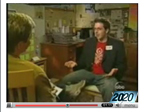 Are you the luckiest person you know?
Are you the luckiest person you know?
Watch Scott’s interview on 20/20!
add to del.icio.us * digg it! * email this post
 Joey Reiman is the CEO of BrightHouse, an Atlanta-based “ideation corporation.”
Joey Reiman is the CEO of BrightHouse, an Atlanta-based “ideation corporation.” 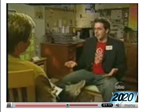 Are you the luckiest person you know?
Are you the luckiest person you know?
 I’ve been wearing a nametag 24-7 for the past 2,444 days.
I’ve been wearing a nametag 24-7 for the past 2,444 days.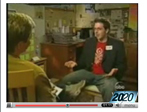 Are you the luckiest person you know?
Are you the luckiest person you know? PICTURE THIS: you just secured an interview on the local news station. Or in your town’s daily paper. Or on CNN. Or in a trade publication. Or on the local morning radio show.
PICTURE THIS: you just secured an interview on the local news station. Or in your town’s daily paper. Or on CNN. Or in a trade publication. Or on the local morning radio show. Are you the luckiest person you know?
Are you the luckiest person you know?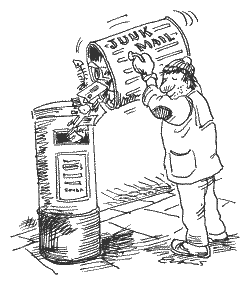 Harry Beckwith, bestselling author of
Harry Beckwith, bestselling author of 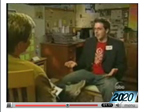 Are you the luckiest person you know?
Are you the luckiest person you know? Why do people always insist on “getting right down to business?”
Why do people always insist on “getting right down to business?”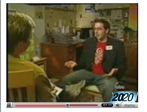 Are you the luckiest person you know?
Are you the luckiest person you know? PICTURE THIS: you walk into Borders on a Sunday afternoon. You head over to the business section to pick up the latest book on leadership.
PICTURE THIS: you walk into Borders on a Sunday afternoon. You head over to the business section to pick up the latest book on leadership.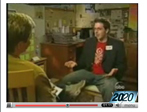 Are you the luckiest person you know?
Are you the luckiest person you know?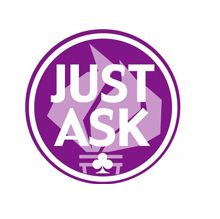 Sales calls.
Sales calls. Are you the luckiest person you know?
Are you the luckiest person you know? The other day one of my audience members asked me, “What do you like LEAST about your job?”
The other day one of my audience members asked me, “What do you like LEAST about your job?”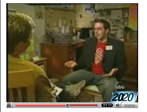 Are you the luckiest person you know?
Are you the luckiest person you know? It’s the most frequently asked question, like, ever.
It’s the most frequently asked question, like, ever. * * * *
* * * *